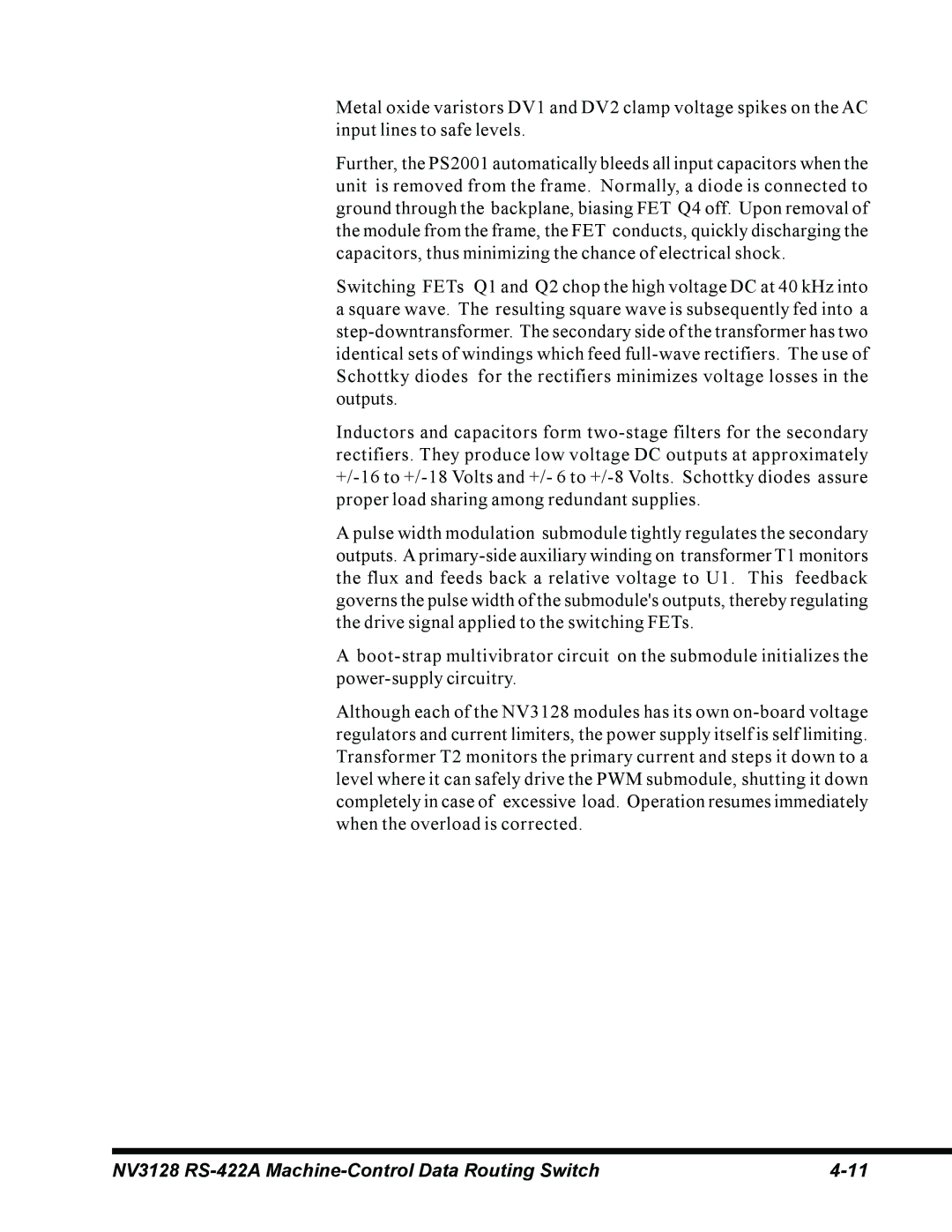
Metal oxide varistors DV1 and DV2 clamp voltage spikes on the AC input lines to safe levels.
Further, the PS2001 automatically bleeds all input capacitors when the unit is removed from the frame. Normally, a diode is connected to ground through the backplane, biasing FET Q4 off. Upon removal of the module from the frame, the FET conducts, quickly discharging the capacitors, thus minimizing the chance of electrical shock.
Switching FETs Q1 and Q2 chop the high voltage DC at 40 kHz into a square wave. The resulting square wave is subsequently fed into a step-downtransformer. The secondary side of the transformer has two identical sets of windings which feed full-wave rectifiers. The use of Schottky diodes for the rectifiers minimizes voltage losses in the outputs.
Inductors and capacitors form two-stage filters for the secondary rectifiers. They produce low voltage DC outputs at approximately +/-16 to +/-18 Volts and +/- 6 to +/-8 Volts. Schottky diodes assure proper load sharing among redundant supplies.
A pulse width modulation submodule tightly regulates the secondary outputs. A primary-side auxiliary winding on transformer T1 monitors the flux and feeds back a relative voltage to U1. This feedback governs the pulse width of the submodule's outputs, thereby regulating the drive signal applied to the switching FETs.
Aboot-strap multivibrator circuit on the submodule initializes the power-supply circuitry.
Although each of the NV3128 modules has its own on-board voltage regulators and current limiters, the power supply itself is self limiting. Transformer T2 monitors the primary current and steps it down to a level where it can safely drive the PWM submodule, shutting it down completely in case of excessive load. Operation resumes immediately when the overload is corrected.
NV3128 RS-422A Machine-Control Data Routing Switch | 4-11 |
